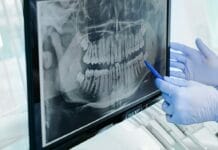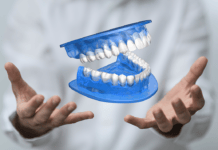How many times have you been told by a patient, friend, or family member, “No offense, but I really hate going to the dentist?” Many dental professionals are already desensitized to the offensive statement, as well as other reactions that occur during an appointment. While some level of compartmentalizing is necessary for maintaining control of the treatment environment and ensuring safe treatment, the same might not come so easily for the patient.
What would seem like a routine preventive appointment to a clinician is often perceived as terrifying for many. Factors such as negative experiences, fear of the unknown after years of avoidance, or stress from financial implications of dental care are just a few major barriers to scheduling an appointment. Over time, dental needs compile and increase the tendency for pain, limited chewing, and speaking function. Confidence wanes, and the cycle continues, resulting in a great deal of stress and even acceptance that poor oral health is inevitable.
The argument from the professional’s perspective can also be made, “They should’ve just taken care of their teeth at home, stayed away from junk food, and brushed and flossed their teeth at home. Maybe if they took better care of themselves at an early age, they wouldn’t be in this mess now.”
Let’s be honest and recall what we learned about public health disparities (socioeconomic status and health). Not everyone is fortunate enough to have been taught about the basics of oral health care. By the time some patients realize the consequences of neglect (cavities, gum disease, etc.), the thought of making up for lost time can feel extremely overwhelming and embarrassing.
Exploring Generalized Anxiety
A caregiver does what is required for those in need, regardless of how they ended up in the position of needing care. Understanding dental phobia begins by breaking down some of the causational factors of generalized anxiety, such as the situations mentioned above, and the effects it can have on a person’s day-to-day functioning.
Anxiety is a reaction that has been hardwired in our brains as a means of protection from perceived harm. Additionally, characteristics of anxiety have been observed in many other species as a measure of offspring protection.1 For many people, this biological reaction occurs much more easily than others, and each person possesses sensitivities to different stimuli.
When these anxious individuals enter the dental office, the biological processes initially meant for survival will activate and place their bodies in a state of hyperawareness, and symptoms seen with generalized anxiety will present in the same manner. The heart rate increases, and sweating, trembling, and muscle tension occurs. The patient is in a state of panic, and the ability to think clearly is severely diminished.1 For the dental team, stress can be increased in trying to keep the patient calm and avoid causing harm.
Implications of Dental Fears
Preventive dental treatment is necessary for early intervention of diseases such as tooth decay, periodontitis, cancer, and nutritional deficiencies.2 The identification of dental diseases results in greater health outcomes and reduced likelihood of having to save orofacial and dental structures.3
For someone who is avoiding the dental office, unaddressed dental issues can mean dangerous long-term implications reaching far beyond oral health. For this reason, patients experiencing anxiety related to dental care need assistance since good oral health also helps to effectively manage and prevent serious medical conditions such as diabetes, stroke, and heart disease.4 Additionally, early intervening care can prevent many of these health issues, which end up becoming much more costly than the preventive measures alone.
Many types of interventions have been used to help patients remain calm during dental care:
1) Cognitive-based therapy is a form of treatment aimed at training psychological processes which lead to issues such as depression, anxiety, drug abuse, eating disorders, and other types of mental illness.5 Studies have shown the benefits of training patients to become aware of triggering factors and understanding the reactions that occur when exposed to those triggers.
This is usually conducted by psychologists in collaboration with the patients in exposing them to triggers through watching videos of routine dental appointments.5 The patients are able to practice gaining control of their reactions while in the dental chair.
2) A primary method of anxiety management in the dental setting is the use of sedative and anxiolytic medications to reduce or eliminate anxious thoughts and feelings, enabling a safe environment for both the patient and dental team.6
Despite high levels of success, these medications can cause several unwanted side effects, as well as potentially pose a threat to individuals who present with certain underlying conditions that contraindicate their use.9 One exception, though, is the use of nitrous oxide because of its’ ease of administration, quick recovery, and low risk of adverse reactions. Certain groups of individuals are still more likely to avoid dental care because of the high cost associated with extensive dental treatment. For these people, additional costs of sedative drugs may become an overlapping factor preventing them from seeking treatment.
3) Natural remedies have become increasingly more popular in recent times as benefits are claimed while avoiding many unwanted side effects from sedative medications. Homeopathic methods of relaxation therapy are of importance for consideration due to its history of use prior to modern medicinal discoveries. Also known as complementary and alternative medicine (CAM), homeopathic approaches have been most requested by individuals who perceive unsuccessful resolution of symptoms with conventional medicine.14
Although not all-inclusive, the following have been documented as effective alternative remedies for anxiety: lavender,10 chamomile,11 blue skullcap (Scutellaria lateriflora), and valerian.12 Cannabis Sativa (CBD) has also become a popular alternative for use in humans and animals in management of anxiety, but only available for legal use depending on individual state laws and regulations.13 Because natural remedies are not regulated by the FDA, providers should ensure their patients understand the risk of potential interactions with any medications they’re currently taking.
4) Lastly, physical relaxation methods have been studied, not only for application in anxiety management but for overall health and wellness. Exercise is regarded as a major means of enhancing physical strength and minimizing negative effects commonly associated with the aging process down to a cellular level.7 Physical exercise presents many benefits in reducing physiological and psychological strains caused by anxiety.8
One study examined the use of meditation combined with cognitive therapy for more profound results. The addition of progressive relaxation allowed the patient to gain more control over muscle tension and physical reactions when faced with stressful situations.9 The key with this type of anxiety management requires the patient to be willing to comply with recommendations.
In the end, treatment should be determined on a case-by-case basis. Understanding that every person will present with unique needs and goals for their health will help in deciding which interventions will be most useful.
The goal is to ensure that both patient and dental team are on the same page and communication remains open for maximized chances of success. Anxiety is multifactorial and often requires long-term treatment. With the right means of management, patients will become more confident in their ability to tolerate dental care and attain great improvements in overall health.
Now Check Out the Peer-Reviewed, Self-Study CE Courses from Today’s RDH!
Listen to the Today’s RDH Dental Hygiene Podcast Below:
References
- Tyrer, P., Baldwin, D. (2006). Generalised Anxiety Disorder. The Lancet. 2006; 368(9553): 2156-2166. Retrieved from https://www-sciencedirect-com.ezproxy.trident.edu/science/article/pii/S0140673606698656?via%3Dihub.
- Mayo Clinic (2020). Dental Exam. Retrieved from https://www.mayoclinic.org/tests-procedures/dental-exam-for-children/about/pac-20393728.
- Lutfiyya, M.N., Gross, A.J., Soffe, B., Lipsky, M.S. Dental Care Utilization: Examining the Associations Between Health Services Deficits and Not Having a Dental Visit in Past 12 Months. BMC Public Health. 2019; 19: 265. Retrieved from https://link.springer.com/article/60.1186/s12889-019-6590-y#citeas.
- American Academy of Periodontology (2019). Periodontal Disease and Systemic Health. Retrieved from https://www.perio.org/consumer/gum-disease-and-other-diseases
- American Psychological Association (2020). What is Cognitive Behavioral Therapy? Retrieved from https://www.apa.org/ptsd-guideline/patients-and-families/cognitive-behavioral.
- Sivaramakrishnan, G., Sridharan, K. Nitrous Oxide and Midazolam Sedation: A Systematic Review and Meta-Analysis. Anesthesia Progress. 2017; 64(2): 59-65. doi: 10.2344/anpr-63-03-06.
- Rebelo-Marques, A., et al. Aging Hallmarks: The Benefits of Physical Exercise. Frontiers in Endocrinology. 2018; 258(9): 1-15. Retrieved from https://www.frontiersin.org/articles/10.3389/fendo.2018.00258/full.
- Hillier, A., Murphy, D., Ferrara, C. A Pilot Study: Short-term Reduction in Salivary Cortisol Following Low Level Physical Exercise and Relaxation among Adolescents and Young Adults on the Autism Spectrum. Stress & Health: Journal of the International Society for the Investigation of Stress. 2011; 27(5): 395-402. doi: 10.1002/smi.1391.
- Manzoni, G.M., Pagnini, F., Castelnuovo, G., Molinari, E. Relaxation training for anxiety: a ten-years systematic review with meta-analysis. BMC Psychiatry. 2008; 8(41). Retrieved from https://doi.org/10.1186/1471-244X-8-41.
- Wotman, M. et al. The Efficacy of Lavender Aromatherapy in Reducing Preoperative Anxiety in Ambulatory Surgery Patients Undergoing Procedures in General Otolaryngology, Laryngoscope Investigative Otolaryngology. 2017; 2(6): 437-441. Retrieved from https://onlinelibrary.wiley.com/doi/full/10.1002/lio2.121
- Amsterdam, J. et al. A Randomized, Double-Blind, Placebo-Controlled Trial of Oral Matricaria Recutita (Chamomile) Extract Therapy of Generalized Anxiety Disorder, Journal of Clinical Psychopharmacology. 2017; 29(4): 378-382. doi:10.1097/JCP.0b013e3181ac935c.
- Ernst E. Herbal Remedies for Anxiety-A Systematic Review of Controlled Clinical Trials, Phytomedicine. 2006; 13(3): 205-208. Retrieved from https://www-sciencedirect-com.ezproxy.trident.edu/science/article/pii/S0944711305001315
- Schier, A. et al. Cannabidiol, a Cannabis Sativa Constituent, as an Anxiolytic Drug, Revista Brasileira de Psiquiatria. 2011; 34(1): S105-S110. Retrieved from http://web.b.ebscohost.com.ezproxy.trident.edu:2048/ehost/pdfviewer/pdfviewer?vid=2&sid=edf182c0-eb70-40f8-b8af-15859584d67a%40pdc-v-sessmgr01
- Baatsch, B., Zimmer, S., Recchia, D.R., Büssing, A. (2017). Complementary and alternative therapies in dentistry and characteristics of dentists who recommend them. Complementary Therapies in Medicine. 2017; 35: 64-69. Retrieved from http://dx.doi.org/10.1016/j.ctim.2017.08.008












